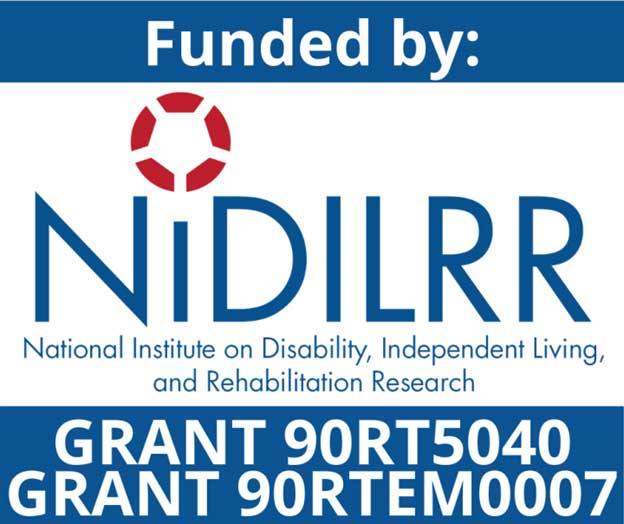Legal Definitions in the U.S.
Adults:
Legally Blind
Central visual acuity 20/200 or less in the better eye with best correction or widest diameter of visual field subtending an angle of no greater than 20 degrees. (Social Security Administration)
Severely Visually Impaired
Visual acuity better than 20/200 but less than 20/70 in the better eye with best correction. Note that in most states 20/70 is required to get a driver's license unless the person is referred to a bi-optic driving program for special training. (Rehabilitation Services Administration)
Children:
Visual impairment including blindness means an impairment in vision that, even with correction, adversely affects a child’s educational performance. The term includes both partial sight and blindness. (IDEA, 2004)
World Health Organization Definitions
Blindness is defined as visual acuity of less than 3/60 or corresponding visual field loss in the better eye with best possible correction. (ICD-10 Codes 3, 4, & 5)
Low Vision corresponds to visual acuity of less than 6/12 but equal to or better than 3/60 in the better eye with best correction. (ICD-10 Codes 1 & 2)
- Mild vision impairment – visual acuity worse that 6/12 to 6/18
- Moderate vision impairment – visual acuity worse than 6/18 to 6/60
- Severe vision impairment – visual acuity worse than 6/60 to 3/60
International Classification of Diseases - revision 10 (ICD-10). This coding of all diseases includes a five-digit code. Levels of visual loss are coded starting with the numbers 1-5. For example, total blindness both eyes is coded 369.01. But can also be coded by etiology as juvenile glaucoma 365.14 or 362.74 as retinitis pigmentosa. The ICD-10 is used primarily as a reporting mechanism for doctors. Physicians, insurance companies, and medical services providers use it extensively.
https://www.who.int/news-room/fact-sheets/detail/blindness-and-visual-impairment
American Academy of Ophthalmology Definitions
- Visual Acuity
- Acuteness or clarity of vision which is dependent on the sharpness of the retinal focus, the sensitivity of the nervous elements, and the interpretative faculty of the brain. Clinically it is usually measured with the Snellen chart or other similar device.
- Visual Impairment
- “…may be mild or severe, but in each case visual performance does not meet the individual's needs.”
- Legal Blindness
- Federal Regulation establishes Legal Blindness: “…when the best vision obtained in the better eye, is 20/200 or less, or when, despite the acuity attained, the field of vision is 20 degrees or less.”
- Low Vision
- When ordinary eye glasses, contact lenses or intraocular lens implants cannot provide sharp sight, and an individual is said to have low vision … although reduced central or reading vision is common, low vision may also result from decreased side (peripheral) vision, a reduction of loss of color vision, or the eye's inability to properly adjust to light, contrast or glare.
American Optometric Association Definitions
- Partially Sighted
- Visual acuity that when corrected is still between 20/70 and 20/200; (a person with 20/70 eyesight can clearly distinguish an object at 20 feet that a person with normal vision can clearly distinguish at 70 feet).
- Visual Acuity - (criterion)
- Certify eligibility for special services or programs - financial aid and tax credits.
- Legal Blindness
- Visual acuity that cannot be corrected to better than 20/200 and/or restricted field vision less than 20 degrees.
- Visual Field Loss - (criterion)
- Certify eligibility for special services or programs - financial aid and tax credits.
- Low Vision
- “…terms used to describe several levels of very limited sight which interfere with a person's daily routine activities, have some residual vision, may have reduced central visual acuity (sharpness of vision), with normal or good peripheral (side) vision, may have a very narrow field of view but good central acuity.”
Definition of Deafblind
- "A combination of hearing and visual impairments causing such severe communication, developmental, and educational problems that the child cannot be accommodated in either a program specifically for the deaf or a program specifically for the Visual Impairment, including blindness: An impairment in vision that, even with correction, adversely affects a child's educational performance. The term includes both partial sight and blindness."
- —IDEA, 2004
"Persons who have substantial visual and hearing losses such that the combination of the two causes extreme difficulty in pursuit of educational, vocational, avocational or social goals."
—Helen Keller World Conference on Services to DeafBlind Youth and Adults, 1997
"Central visual acuity of 20/200 or less in the better eye with corrective lenses or visual acuity of greater than 20/200 if the visual field is constructed to 20 degrees or less, and a physiological chronic hearing impairment so severe that most speech cannot be understood through the ear with optimum amplification. A speech discriminating score of 40% or less would generally indicate such a hearing impairment."
—Helen Keller National Center for DeafBlind Youth and Adults
"…Children who have auditory and visual handicaps, the combination of which cases such severe communication and other developmental and educational problems that they cannot be properly accommodated in special education programs solely for the hearing handicapped child or the visually handicapped child."
—Federal Register, February 20, 1975
